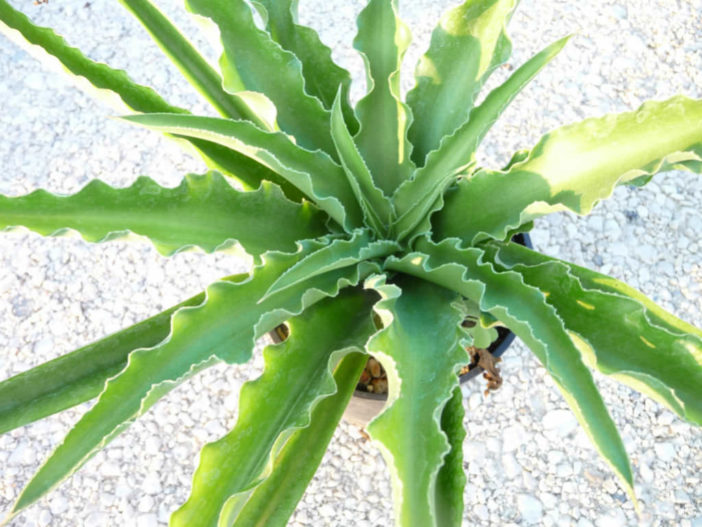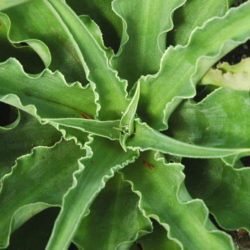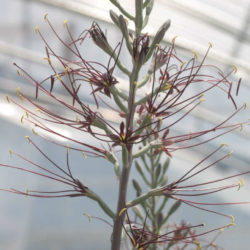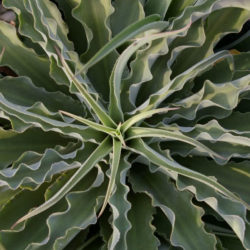Scientific Name
Manfreda undulata (Klotzsch) Rose
Synonyms
Agave undulata, Agave drimiifolia
Scientific Classification
Family: Asparagaceae
Subfamily: Agavoideae
Genus: Manfreda
Description
Manfreda undulata is a small, low-growing plant that forms a rosette of silvery-blue-green leaves. The rosette grows up to 4 inches (10 cm) tall and up to 2 feet (60 cm) in diameter. Leaves are long and fleshy but not as rigid as Agave. Manfredas typically flower annually once they are mature, and unlike Agaves, they do not die after they bloom. The flower spike can reach up to 8 feet (2.4 m) and bears interesting burgundy brown flowers.

Hardiness
USDA hardiness zone 7a to 11b: from 0 °F (−17.8 °C) to 50 °F (+10 °C).
How to Grow and Care
Manfreda is a tender perennial or "temperennial" succulent plant that grows best in full sun. Plant in well-drained, dry to average soil in containers just slightly wider than the width of the rosette or plant directly in the ground. Since the plant has a rather large root system, the container should be at least 12 inches (30 cm) deep. Manfreda is a slower grower, so it will not quickly overtake the space allotted in the landscape.
When the plants are actively growing in summer, they appreciate a bit of supplemental watering and half-strength fertilizer. During the winter months, the plants should be allowed to dry and should be stored in a cold room at 48 °F (9 °C). Plants are watered only enough to keep the foliage from shriveling.
Manfredas are propagated by the removal of offsets and from fresh seed. Fresh seeds germinate in 7 to 21 days at 68 to 72 °F (19 to 22 °C).
See more at How to Grow and Care for Manfreda.
Origin
Manfreda undulata is described in 1840 from specimens grown in a garden in Germany. Never found in the wild, so probably extinct.
Cultivars
- Manfreda undulata 'Cherry Chocolate Chip'
- Manfreda undulata 'Chocolate Chips'
- Manfreda undulata 'Mint Chocolate Chip'
Links
- Back to genus Manfreda
- Succupedia: Browse succulents by Scientific Name, Common Name, Genus, Family, USDA Hardiness Zone, Origin, or cacti by Genus



